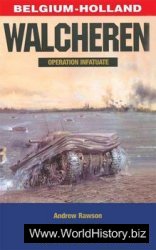When Germany invaded Poland in September 1939, the first dramatic example of the power of blitzkrieg or ‘lightning war’, three motorised corps spearheaded the attack. Included
Below: Panzergrenadiers in a halftrack armed with anti-aircraft gun negotiate a muddy track during the invasion of Poland. Antiaircraft protection for panzergrenadiers was continually strengthened as the war progressed.


Were four motorised divisions. Also present were SS motorised regiments Adolf Hitler, Deutschland and Germania. With the addition of four ‘light’ divisions that became panzer divisions after the Poland campaign, the Germans deployed the equivalent of some six motorised divisions against the Polish forces. In addition, all the panzer divisions, as has been noted, had a motorised infantry brigade attached to support the armoured assault. These motorised troops were crucial to the whole concept of blitzkrieg. Compared with the later battles on the Eastern Front, the numbers of panzergrenadiers deployed were small but, as the military historian J. F.C. Fuller noted in his history of the Second World War, their influence on operations was ‘decisive’.
At this stage, the motorised infantry was largely lorry borne. Later, armoured vehicles would take the panzergrenadiers into battle with more safety and would allow them to get closer to the action. Nevertheless, when the Germans invaded Poland, the motorised infantry formed a key part of the all-arms effort that was blitzkrieg. While Luftwaffe Ju-87 ‘Stukas’ pounded the Polish front-line positions and rear areas, the armoured tip to the blitzkrieg pushed into and through the Polish lines. In the initial phases of the battle for Poland, the Germans avoided areas of tough resistance. Advancing in a wedge formation, German tanks were supported by their motorised infantry
Left: An officer of the Grossdeutschland Division, the cream of the Wehrmacht, scans the horizon. Members of the Grossdeutschland were called on to perform a variety of combat tasks throughout the war, and deserved their reputation as skilled opponents.
That helped clear the way and stormed vital positions that impeded the advance. Most points of resistance were left for the infantry marching up from the rear to tackle. The motorised infantry were there to facilitate the speed of the armoured advance.




 World History
World History









